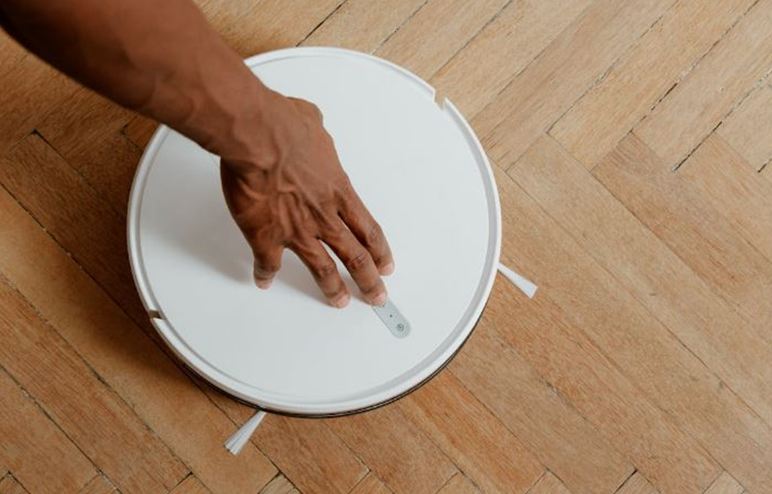In the age of smart home technology, robot vacuums have emerged as a popular choice for homeowners seeking to streamline their cleaning routines. These autonomous devices promise to handle the mundane task of vacuuming with minimal human intervention, offering a convenient solution for maintaining a clean home. But with prices ranging from a couple of hundred to over a thousand dollars, the question arises: Are robot vacuums worth the investment? In this blog, we’ll explore the benefits, drawbacks, and considerations to help you determine if a robot vacuum is the right choice for you.
The Rise of Robot Vacuums
The first robot vacuum, the Electrolux Trilobite, was introduced in 1996, but it wasn’t until the early 2000s that the technology began to gain traction with the introduction of the Roomba by iRobot. Since then, robot vacuums have evolved significantly, incorporating advanced features such as Wi-Fi connectivity, smart mapping, and powerful suction capabilities. Today, brands like Hobot, iRobot, Neato, Eufy, and Shark dominate the market, offering a wide range of models to suit different needs and budgets.
Benefits of Robot Vacuums
1. Convenience and Time-Saving
One of the most significant advantages of robot vacuums is their convenience. These devices are designed to operate autonomously, meaning they can clean your floors with little to no human intervention. With the ability to schedule cleaning sessions via a smartphone app, you can set your robot vacuum to clean while you’re at work, running errands, or even sleeping. This hands-free operation saves valuable time and allows you to focus on other tasks or simply relax.
2. Consistent Cleaning
Robot vacuums are programmed to clean regularly, ensuring that your floors are consistently free of dust, dirt, and debris. Many models can be scheduled to run daily or several times a week, maintaining a level of cleanliness that might be challenging to achieve with manual vacuuming alone. This consistent cleaning is especially beneficial for households with pets, as it helps keep pet hair and dander under control.
Modern robot vacuums come equipped with sophisticated navigation and mapping technologies. Using sensors, cameras, and lasers, these devices can create detailed maps of your home, allowing them to navigate efficiently and avoid obstacles. Some models can even store multiple floor plans, making them suitable for multi-story homes. This advanced mapping ensures thorough coverage and prevents the robot from getting stuck or missing spots.
4. Smart Home Integration
Many robot vacuums are compatible with smart home systems such as Amazon Alexa, Google Assistant, and Apple HomeKit. This integration allows you to control your robot vacuum using voice commands or through your smart home hub. Additionally, some models can be connected to other smart devices, such as security cameras or smart locks, enhancing the overall functionality and convenience of your smart home ecosystem.
5. Improved Air Quality
Regular vacuuming with a robot vacuum can help improve indoor air quality by reducing the amount of dust, allergens, and pet dander in your home. Many robot vacuums are equipped with HEPA filters, which trap fine particles and prevent them from being recirculated into the air. This feature is particularly beneficial for individuals with allergies or respiratory conditions, as it helps create a cleaner and healthier living environment.
Drawbacks of Robot Vacuums
1. Initial Cost
One of the primary concerns for potential buyers is the initial cost of a robot vacuum. High-end models with advanced features can be quite expensive, with prices exceeding $1,000. While there are more affordable options available, they may lack some of the premium features and performance capabilities of their pricier counterparts. It’s important to weigh the cost against the potential benefits and convenience to determine if the investment is justified for your specific needs.
2. Maintenance and Upkeep
Although robot vacuums are designed to operate autonomously, they still require regular maintenance to function optimally. This includes emptying the dustbin, cleaning the brushes and filters, and occasionally replacing worn-out parts. Some models come with self-emptying bases, which can reduce the frequency of manual intervention, but these features often come at a higher price point. It’s essential to consider the ongoing maintenance requirements when evaluating the overall convenience and cost-effectiveness of a robot vacuum.
3. Limited Cleaning Power
While robot vacuums have come a long way in terms of suction power and cleaning capabilities, they may not match the performance of high-end traditional vacuums, especially on thick carpets or heavily soiled areas. Robot vacuums are generally better suited for light to moderate cleaning tasks and may require supplementary manual vacuuming for a more thorough clean. If your home has deep carpets or frequently experiences heavy dirt and debris, a robot vacuum may not fully replace a traditional vacuum cleaner.
4. Battery Life and Charging
Robot vacuums rely on battery power, which means they need to recharge periodically. The battery life varies between models, with some capable of running for over two hours on a single charge, while others may only last for an hour. Most robot vacuums will automatically return to their charging dock when the battery is low, but this can interrupt the cleaning process, especially in larger homes. It’s important to consider the battery life and charging time when selecting a model, particularly if you have a large area to clean.
Despite advancements in navigation technology, robot vacuums can still encounter challenges when navigating complex or cluttered environments. Small obstacles, such as cables, toys, and furniture legs, can cause the vacuum to become stuck or miss certain areas. Additionally, some models may struggle with transitioning between different floor types, such as moving from hardwood to carpet. It’s crucial to ensure that your home is relatively robot-friendly to maximize the efficiency and effectiveness of the vacuum.
Considerations for Choosing a Robot Vacuum
When deciding whether a robot vacuum is worth the investment, it’s essential to consider your specific needs and preferences.
Here are some factors to keep in mind:
1. Home Size and Layout
The size and layout of your home play a significant role in determining the suitability of a robot vacuum. Larger homes with multiple rooms and levels may benefit from a model with advanced mapping capabilities and a longer battery life. Conversely, smaller apartments or homes with open floor plans may find more basic models sufficient for their needs.
2. Floor Type
Consider the types of flooring in your home when selecting a robot vacuum. Some models are better suited for hardwood and tile floors, while others are effectively. If you have a mix of floor types, look for a model with adjustable settings and robust navigation to ensure thorough cleaning. Designed to handle carpets and rugs more
3. Pet Ownership
If you have pets, a robot vacuum with strong suction power and a high-quality filter is essential for effectively capturing pet hair and dander. Some models come with specialized pet hair brushes and additional features designed to handle the challenges of pet ownership.
4. Budget
Budget is a crucial factor when investing in a robot vacuum. While high-end models offer advanced features and superior performance, there are also budget-friendly options that provide adequate cleaning capabilities for smaller spaces or less demanding environments. Determine your budget and prioritize the features that matter most to you.
5. Smart Home Compatibility
If you have an existing smart home system, consider a robot vacuum that integrates seamlessly with your setup. This compatibility allows for more convenient control and automation, enhancing the overall smart home experience.
Conclusion
Robot vacuums offer a range of benefits, including convenience, consistent cleaning, advanced navigation, and improved air quality. However, they also come with drawbacks such as initial cost, maintenance requirements, and potential navigation issues. Whether a robot vacuum is worth the investment depends on your specific needs, home environment, and budget.
For those seeking a hands-free cleaning solution and willing to invest in a higher-end model, a robot vacuum can be a valuable addition to your home. On the other hand, if you have a larger home with complex layouts or require deep cleaning capabilities, a robot vacuum may serve as a supplementary tool rather than a complete replacement for traditional vacuums.
Ultimately, the decision comes down to balancing the convenience and benefits of a robot vacuum against the cost and potential limitations. By carefully considering your needs and researching the available options, you can make an informed decision that best suits your lifestyle and home environment.


